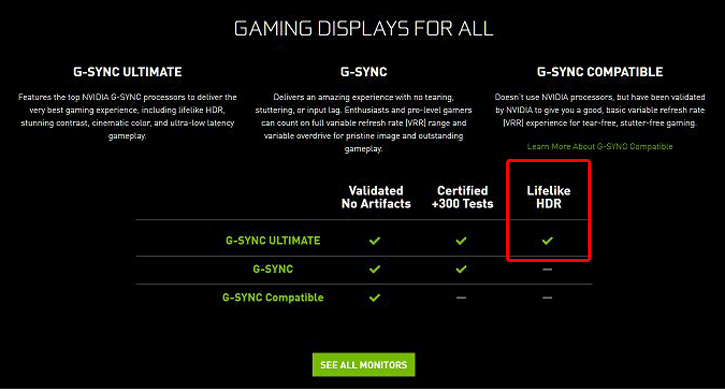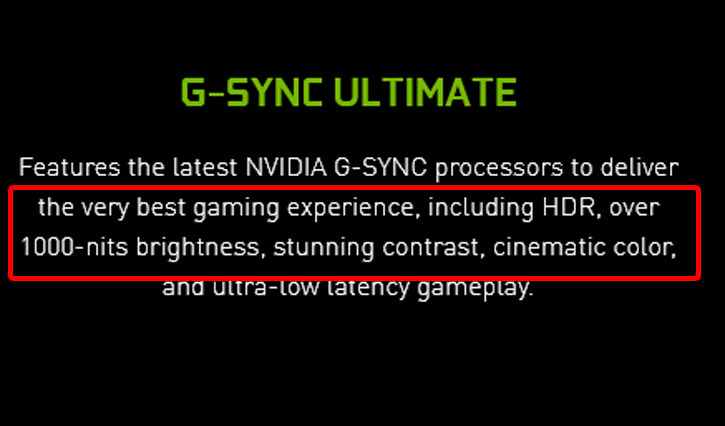Yesterday we posted a story about G-Sync Ultimate versus the wording that NVIDIA now uses on the required HDR specification in G-Sync Ultimate.
In a nutshell, 1000 Nits was the minimum previous requirement (alongside a G-Sync model and testing) for that ultimate certification on monitors. The wording was changed, and some users already spotted G-Sync ultimate certified monitors that are 600 Nits and did not use local dimming. This creates a vague description as NVIDIA did that silently.
Moments ago, we received word back from NVIDIA with a statement on what we wrote.
NVIDIA
Late last year we updated G-SYNC ULTIMATE to include new display technologies such as OLED and edge-lit LCDs. All G-SYNC Ultimate displays are powered by advanced NVIDIA G-SYNC processors to deliver a fantastic gaming experience including lifelike HDR, stunning contract, cinematic color and ultra-low latency gameplay. While the original G-SYNC Ultimate displays were 1000 nits with FALD, the newest displays, like OLED, deliver infinite contrast with only 600-700 nits, and advanced multi-zone edge-lit displays offer remarkable contrast with 600-700 nits. G-SYNC Ultimate was never defined by nits alone nor did it require a VESA DisplayHDR1000 certification. Regular G-SYNC displays are also powered by NVIDIA G-SYNC processors as well.
The ACER X34 S monitor was erroneously listed as G-SYNC ULTIMATE on the NVIDIA web site. It should be listed as “G-SYNC” and the web page is being corrected.
Honestly, I am a little disoriented by the statement, stating 'G-Sync Ultimate never was defined by nits.' The reality is that we've talked many times with key NVIDIA staff on media briefings about this, and yes at least 1000 Nits peak was explained as a minimum mandatory target at the time (1000 cd/m2 (peak/ HDR on)), or at the very least the aim for it was just that as you can clearly observe from the mentioned brightness levels in nits throughout all the documentation.
Make no mistake, a target of 600 nits is still terrific, I can even argue that I found 1000 Nits for your eyes is too much at times at such close distance of the monitor. And with upcoming OLED monitors, it will make sense, don't get me wrong. Perhaps NVIDIA overshot a bit on the original spec as it was too unrealistic for the market. But that nit value at the very least as 1000 nits indicator has changed; there's no question about it. As to how important it will be in the end, only consumers can decide for themselves.




